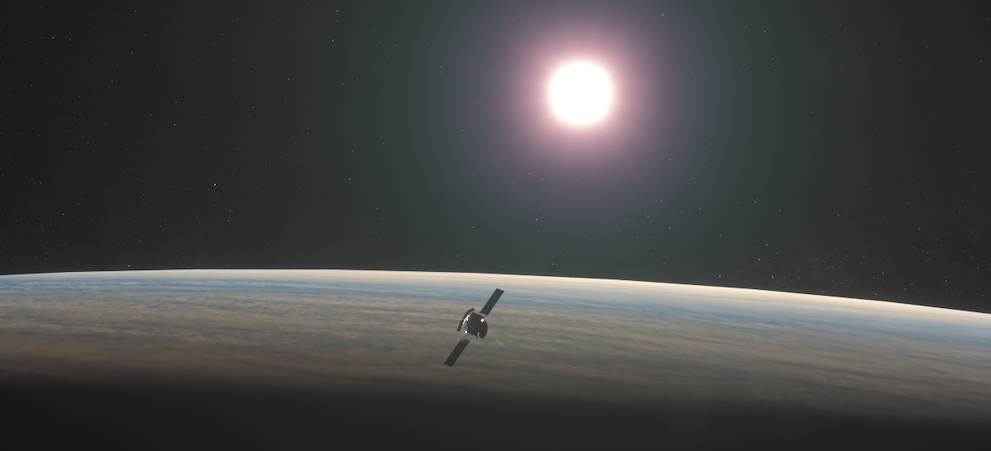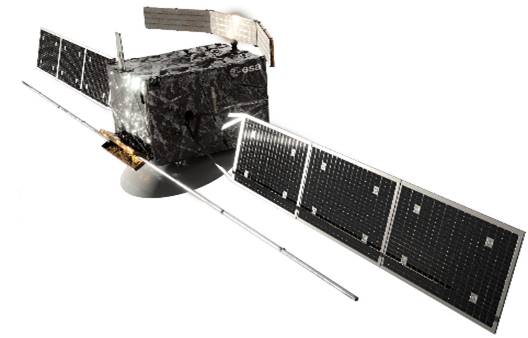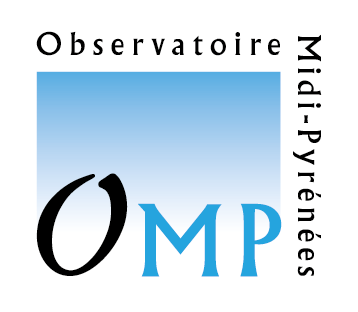ESA gives green light to EnVision mission
It’s official. On June 9, 2021, the ESA program committee has selected the EnVision mission, inaugurating after NASA’s announcement on June 2, nearly two decades of joint exploration of our neighboring planet Venus. The realization phase will thus be able to start, to the satisfaction of the French scientific teams closely involved in the conception of the project, in particular at the IRAP.

Credits: Observatoire de Paris / VR2Planets / Damia Bouic
Located at 0.72 astronomical units from the Sun, with a radius 0.95 times that of the Earth, Venus is the planet that should have resembled most our planet in the solar system. However, at some point in history there was a bifurcation: Earth has been continuously habitable for nearly 4 billion years, but Venus became the uninhabitable planet we know today. The exploration of Venus is therefore essential to understand the conditions of formation and evolution of terrestrial mass planets, and the evolution of the conditions of habitability and appearance of life.
To this end, Venus has many questions still unanswered. Did Venus have liquid water on its surface, how did its atmosphere evolve over time, and when and why did the greenhouse effect reach the extreme characteristics we know today? What are the exchange properties between the surface and the atmosphere, what were the different regimes of volcanic and tectonic activity of Venus during its geological history? Was the plate tectonics, perhaps episodic, present as on Earth, and what were the consequences on the formation and distribution of the uneven reliefs or the modification of the surface? What is the composition of the rocks constituting the tesserae, high rocky plateaus perhaps analogous to our continents? What is the degree of alteration and oxydation of these rocks and do these surfaces preserve traces of an earlier time when water was more widespread? Are the rapid variations of the atmospheric composition in sulphurous elements a reflection of a present volcanic activity?
A double heritage: Magellan and Venus Express
The EnVision mission is part of the dual legacy of NASA’s Magellan mission (1990-1994), and ESA’s Venus Express mission (2007-2014). It will simultaneously characterize all geophysical processes operating on Venus from the inner core to the upper atmosphere.
The selection phase took place in several steps:
- Call for mission proposals launched by ESA in April 2016;
- Pre-selection in April 2018 of 3 missions out of the 27 proposed for detailed concept studies;
- M5 Mission Definition Review (MDR) in December 2018;
- Assessment Study Report published in February 2021;
- M5 Mission Selection Review (MSR) in February-April 2021;
- Evaluation of study outcome by a panel of experts and recommendation of a mission in May 2021 ;
- Formal vote of the ESA Program Committee and public announcement on June 10, 2021.
The selection phase has shown that the mission concept, orbital parameters, environmental constraints, data transfer and storage, and instrument accommodation on the satellite are compatible with the M5 program constraints. EnVision officially becomes the 5th intermediate class mission of the European Space Agency’s Cosmic Vision program, with a budget of 610 million euros (2021).
The EnVision mission will be launched by Ariane 6.2 in June 2032, with science operations beginning in the first quarter of 2035 after a 15-month aerobraking phase in the upper atmosphere of Venus prior to stationing in low polar orbit. EnVision is based on a highly integrated ESA-NASA partnership, in which NASA provides the primary instrument, an S-band synthetic aperture radar (VenSAR) studied at the Jet Propulsion Laboratory. The scientific payload consists of a second radar to probe the surface layers of the ground (SRS), studied by the Italian Space Agency (ASI), and a suite of three spectrometers operating in the infrared and ultraviolet (VenSpec-M, -H, -U), studied respectively by the German (DLR), Belgian (BELSPO), and French (CNES) space agencies.

The space probe EnVision, launched by Ariane 6.2 in 2032, will observe the planet in multiple frequency ranges, for the simultaneous study of the surface, the interior and the atmosphere of our close neighbor. Credits: Observatoire de Paris / VR2Planets
The mission is proposed by the United Kingdom (R. Ghail, Royal Halloway, University of London, C. Wilson, University of Oxford) and by France (T. Widemann, Observatoire de Paris-PSL and Université de Versailles Saint-Quentin/Paris-Saclay
IRAP’s role within EnVision
IRAP is strongly involved in the EnVision mission, through :
- The scientific co-leadership of the UV imaging spectrometer VenSpec-U carried by co-PI Jérémie Lasue at IRAP (PI: Emmanuel Marcq at LATMOS with LESIA participation in the instrumental consortium). This instrument will measure sulphurous gases above clouds and will study the spatial variability of cloud tops on scales ranging from 6 km to planetary scale.
- Responsibility for the mechanical development of the VenSpec-U instrument and participation in the construction of the flight model and calibrations that will be performed on the ground.
- The responsibility for the development of the door mechanism to protect the instrument from light and molecular contamination.
Further Resources
- ESA Press Release (https://sci.esa.int/web/cosmic-vision/-/esa-selects-revolutionary-venus-mission-envision)
- NASA Press Release (https://www.jpl.nasa.gov/news/then-there-were-3-nasa-to-collaborate-on-esas-new-venus-mission)
- Website dedicated to the mission http://envisionvenus.eu
- Twitter account of the mission @envisionvenus
- Assessment Study Report on the ESA website : https://sci.esa.int/web/cosmic-vision/-/envision-assessment-study-report-yellow-book
IRAP Contact
- Jérémie Lasue, jeremie.lasue@irap.omp.eu






